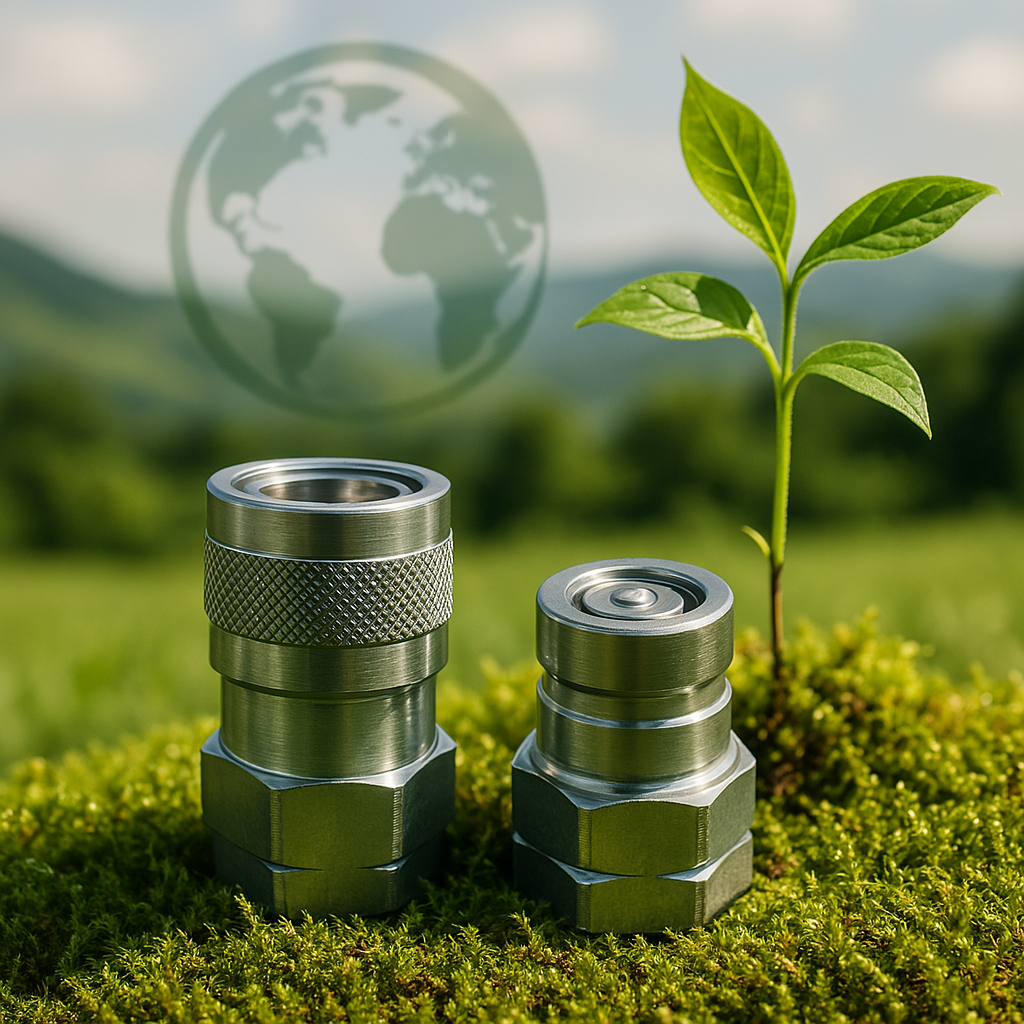
Manufacturing with a Commitment to the Future
At HESSAN, we are committed to manufacturing not only for today but also for future generations. We see sustainability as an integral part of our business approach and address it from environmental, economic, and social perspectives. In all our products, including hydraulic connection components, automatic coupling groups, and marker valves, we strive to create a sustainable industrial ecosystem by focusing on energy efficiency, reducing our carbon footprint, utilizing recyclable materials, and implementing innovative engineering solutions.
By integrating technology, R&D, and quality into our sustainability efforts, we develop environmentally friendly, durable, and highly efficient solutions. Guided by our zero defect, zero waste, and zero carbon principles, we continuously enhance our production processes and lead the way in our industry’s green transformation.
Green Manufacturing Technologies and Environmental Responsibility
Our Environmentally Friendly Production Practices:
🌍 Lower Carbon Footprint: We reduce CO₂ emissions by implementing energy-efficient manufacturing technologies.♻️ Use of Recyclable Materials: We prioritize sustainable and recycled materials in our products and production processes.
🔋 Energy-Efficient Systems: We minimize energy consumption through smart production technologies and renewable energy sources.
🏭 Waste Management & Recycling: We develop processes that reduce waste generation and promote material reuse and recycling.
Thanks to our sustainable production approach, we deliver high-performance hydraulic connection components for industrial machinery and the automotive sector while minimizing our environmental footprint.


Sustainability Through R&D: Investing in the Future
💡 Our R&D projects focus on:
✅ Lighter & Stronger Materials: Developing innovative materials that reduce raw material usage and environmental impact.
✅ Hydraulic Systems with Reduced Oil & Fluid Consumption: Designing efficient fluid systems that conserve resources and enhance performance.
✅ Advanced Sealing Technologies: Aiming for zero leakage to increase efficiency while minimizing waste and contamination.
✅ Smart Manufacturing & Digital Transformation: Utilizing data analytics and IoT-based systems to optimize resource consumption and reduce environmental impact.
With our sustainable innovation approach, we continue to develop technologies that protect the environment, reduce costs, and provide long-term solutions
Quality & Sustainability: Making Excellence the Standard
🔹 ISO 9001 & International Certifications: Our manufacturing processes comply fully with global quality and environmental standards.
🔹 100% Precision Quality Control Processes: We operate with zero defect and zero waste policies at every stage of production.
🔹 High Durability & Long-Lasting Products: We develop products that require minimal maintenance, last longer, and are recyclable.
🔹 Customer-Oriented Innovation: We provide tailored solutions that align with our customers’ sustainability goals.
By contributing to the global green transformation, we help protect both nature and the future of the industrial sector through energy-efficient manufacturing models



